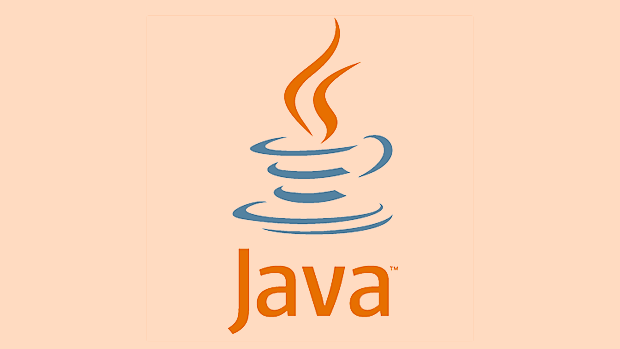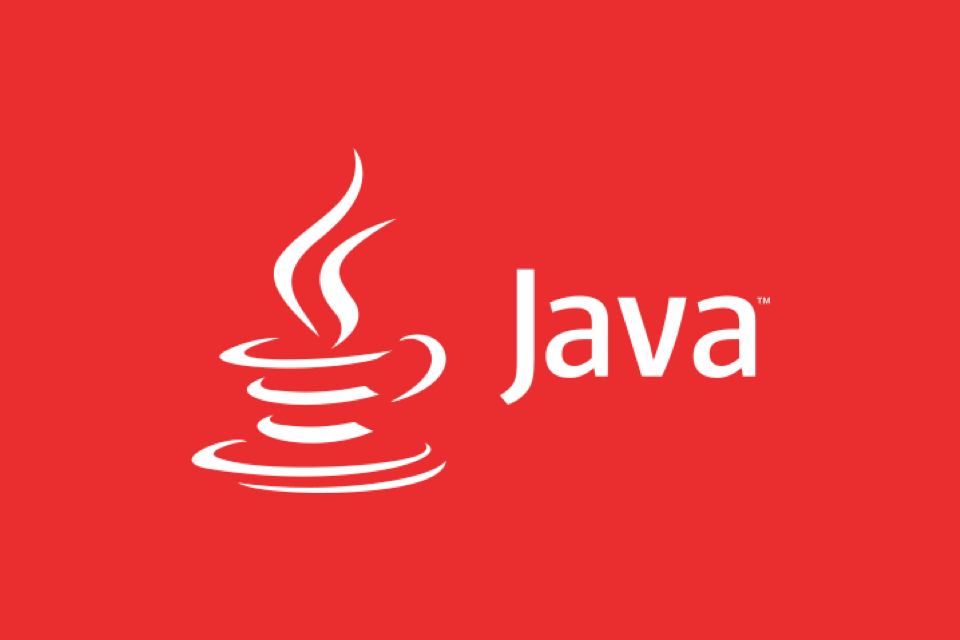java.lang.OutOfMemoryError: Java heap space indicates insufficient heap memory, and needs to check the processing of large objects, memory leaks and heap settings, and locate and optimize the code through the heap dump analysis tool; 2. Metaspace errors are common in dynamic class generation or hot deployment due to excessive class metadata, and MaxMetaspaceSize should be restricted and class loading should be optimized; 3. Unable to create new native thread Due to exhausting system thread resources, it is necessary to check the number of threads, use thread pools, and adjust the stack size; 4. GC overhead limit exceeded means that GC is frequent but has less recycling, and GC logs should be analyzed, the object life cycle should be optimized, and the G1GC and other recyclers should be replaced; 5. Requested array size exceeds VM limit is caused by array length overflow, and the length logic needs to be verified to avoid integer overflow, and large files are processed using streaming; Summary: Heap dump and GC log should be enabled, combined with analysis tool troubleshooting, and solve resource management problems from the code design level, rather than just increasing memory, which can fundamentally solve the OOM problem.

Java OutOfMemoryError is a common critical error at runtime, usually indicating that the JVM cannot allocate objects because the heap memory or other memory areas are exhausted. Although the error message may seem simple, there are many reasons behind it. The following are several common OutOfMemoryError scenarios and their troubleshooting and solutions.

1. java.lang.OutOfMemoryError: Java heap space
This is the most common type, indicating that the heap memory is insufficient to allocate new objects.
Common reasons:
- The application loads a large amount of data (such as large files, caches full data).
- There is a memory leak (such as the constant addition of objects in static collections is not cleaned).
- The heap memory settings are too small to meet normal business needs.
Troubleshooting steps:
- View error log : Confirm whether it is triggered when processing large objects or batch data.
- Monitor using JVM parameters :
-Xmx2g -Xms2g -XX: HeapDumpOnOutOfMemoryError -XX:HeapDumpPath=/path/to/dumps
This generates a heap dump file (heap dump) when OOM.

- Analyze heap dump : Use tools such as Eclipse MAT or VisualVM to open the
.hproffile to find the objects that consume the most memory and their reference chains. - Check the code : Focus on:
- Whether static
MapandListgrow infinitely. - Whether the cache lacks an expiration mechanism (it is recommended to use caches with obsolete strategies such as
WeakHashMaporCaffeine). - Whether to load large files or database full table data at one time.
- Whether static
Solution:
- Increase heap memory (temporary solution):
-Xmx4g
- Fix memory leak code.
- Pagination processing of big data to avoid one-time loading.
2. java.lang.OutOfMemoryError: Metaspace
JDK 8 and later, PermGen is replaced by Metaspace to store metadata of classes.
Common reasons:
- The application dynamically generates a large number of classes (such as using CGLIB, ASM, dynamic proxy, Groovy scripts, etc.).
- Deploy a large number of WAR applications (such as Tomcat hot-deployed class loaders not cleaned).
- The metaspace size is not limited or is set too small.
Troubleshooting method:
- Add JVM parameters to observe Metaspace usage:
-XX:MaxMetaspaceSize=512m -verbose:gc -XX: PrintGCDetails
- Use
jstat -gc <pid>to viewMCMN,MCMX,MC(Metaspace capacity) and other indicators. - Generate and analyze the heap dump (although Metaspace is not in the heap, it can help judge the class loading situation).
Solution:
- Setting a reasonable
MaxMetaspaceSizeprevents unlimited growth. - Check for frequent class loading/unloading, especially for hot deployment scenarios.
- Optimize GC behavior with
-XX: UseG1GCand-XX:MetaspaceSize=256m. - Avoid overuse of runtime bytecode generation.
3. java.lang.OutOfMemoryError: Unable to create new native thread
The JVM attempts to create a new thread, but the operating system cannot allocate native thread resources.

Common reasons:
- The number of threads exceeds the system limit (
ulimit -uuser process limit). - The system memory is insufficient, and each thread takes up 1MB of stack space by default (
-Xss). - The application has created too many threads (such as thread pool not being used, thread leakage).
Troubleshooting method:
- Check the current number of threads:
ps -eLf | grep java | wc -l
- View system restrictions:
ulimit -u # max user processes cat /proc/sys/kernel/threads-max
- Check the JVM thread dump:
jstack <pid> > thread_dump.txt
Check if there are a large number of similar threads or threads that are not ending.
Solution:
- Use a thread pool (such as
ThreadPoolExecutor) instead of manually creating threads. - Resize thread stack (careful):
-Xss256k # Reduce memory per thread stack
- Increase system restrictions (administrator permissions required):
ulimit -u 65535
- Check whether any thread is not closed correctly (such as
executor.shutdown()not being called).
4. java.lang.OutOfMemoryError: GC overhead limit exceeded
The JVM spends a lot of time doing GC (more than 98%), but recycles very little memory (less than 2%), and this error is automatically thrown.
Common reasons:
- There are a large number of "slow death" objects in the heap, with frequent GCs but poor results.
- Out of memory or memory leaks lead to tight free space.
Troubleshooting method:
- Enable GC logging:
-Xlog:gc*,gc heap=debug:file=gc.log:time
- Analyze the GC frequency and recovery volume in the log.
- Combined with heap dump to view object distribution.
Solution:
- Increase heap memory.
- Optimize the object life cycle and avoid holding useless objects for a long time.
- Use more efficient garbage collectors such as G1GC or ZGC instead:
-XX: UseG1GC
- Check whether large objects are frequently created (such as large strings, large arrays).
5. java.lang.OutOfMemoryError: Requested array size exceeds VM limit
Try to create an array that exceeds the JVM limit (such as new int[Integer.MAX_VALUE] ).
Common reasons:
- The integer overflows when calculating the array size, resulting in a negative number or maximum value requested.
- Data processing logic is wrong, mistakenly treating the file size as the length of the array.
Example:
int size = (int) file.length(); // When the file is larger than 2GB, it will be forced to negative byte[] data = new byte[size]; // OOM may be triggered
Solution:
- Use
longto determine the data size and limit the maximum allocation. - Use streaming large files to avoid loading at once.
- Check the array length calculation logic to prevent overflow.
Summary of suggestions
When encountering OutOfMemoryError , don't just turn the memory into the problem. Key steps include:
- ? Enable
-XX: HeapDumpOnOutOfMemoryError - ? Add GC logs and thread dump capabilities
- ? Use analysis tools (MAT, VisualVM, jstat, jstack)
- ? Review collections, caches, threads, IO processing logic in code
The essence of most OOM problems is improper code design or resource management, and only reasonable configuration and careful investigation can be solved.
Basically all is it, not complicated but it is easy to ignore details.
The above is the detailed content of Troubleshooting Common Java `OutOfMemoryError` Scenarios. For more information, please follow other related articles on the PHP Chinese website!

Hot AI Tools

Undress AI Tool
Undress images for free

Undresser.AI Undress
AI-powered app for creating realistic nude photos

AI Clothes Remover
Online AI tool for removing clothes from photos.

Clothoff.io
AI clothes remover

Video Face Swap
Swap faces in any video effortlessly with our completely free AI face swap tool!

Hot Article

Hot Tools

Notepad++7.3.1
Easy-to-use and free code editor

SublimeText3 Chinese version
Chinese version, very easy to use

Zend Studio 13.0.1
Powerful PHP integrated development environment

Dreamweaver CS6
Visual web development tools

SublimeText3 Mac version
God-level code editing software (SublimeText3)

Hot Topics
 VSCode settings.json location
Aug 01, 2025 am 06:12 AM
VSCode settings.json location
Aug 01, 2025 am 06:12 AM
The settings.json file is located in the user-level or workspace-level path and is used to customize VSCode settings. 1. User-level path: Windows is C:\Users\\AppData\Roaming\Code\User\settings.json, macOS is /Users//Library/ApplicationSupport/Code/User/settings.json, Linux is /home//.config/Code/User/settings.json; 2. Workspace-level path: .vscode/settings in the project root directory
 How to handle transactions in Java with JDBC?
Aug 02, 2025 pm 12:29 PM
How to handle transactions in Java with JDBC?
Aug 02, 2025 pm 12:29 PM
To correctly handle JDBC transactions, you must first turn off the automatic commit mode, then perform multiple operations, and finally commit or rollback according to the results; 1. Call conn.setAutoCommit(false) to start the transaction; 2. Execute multiple SQL operations, such as INSERT and UPDATE; 3. Call conn.commit() if all operations are successful, and call conn.rollback() if an exception occurs to ensure data consistency; at the same time, try-with-resources should be used to manage resources, properly handle exceptions and close connections to avoid connection leakage; in addition, it is recommended to use connection pools and set save points to achieve partial rollback, and keep transactions as short as possible to improve performance.
 Mastering Dependency Injection in Java with Spring and Guice
Aug 01, 2025 am 05:53 AM
Mastering Dependency Injection in Java with Spring and Guice
Aug 01, 2025 am 05:53 AM
DependencyInjection(DI)isadesignpatternwhereobjectsreceivedependenciesexternally,promotingloosecouplingandeasiertestingthroughconstructor,setter,orfieldinjection.2.SpringFrameworkusesannotationslike@Component,@Service,and@AutowiredwithJava-basedconfi
 python itertools combinations example
Jul 31, 2025 am 09:53 AM
python itertools combinations example
Jul 31, 2025 am 09:53 AM
itertools.combinations is used to generate all non-repetitive combinations (order irrelevant) that selects a specified number of elements from the iterable object. Its usage includes: 1. Select 2 element combinations from the list, such as ('A','B'), ('A','C'), etc., to avoid repeated order; 2. Take 3 character combinations of strings, such as "abc" and "abd", which are suitable for subsequence generation; 3. Find the combinations where the sum of two numbers is equal to the target value, such as 1 5=6, simplify the double loop logic; the difference between combinations and arrangement lies in whether the order is important, combinations regard AB and BA as the same, while permutations are regarded as different;
 python pytest fixture example
Jul 31, 2025 am 09:35 AM
python pytest fixture example
Jul 31, 2025 am 09:35 AM
fixture is a function used to provide preset environment or data for tests. 1. Use the @pytest.fixture decorator to define fixture; 2. Inject fixture in parameter form in the test function; 3. Execute setup before yield, and then teardown; 4. Control scope through scope parameters, such as function, module, etc.; 5. Place the shared fixture in conftest.py to achieve cross-file sharing, thereby improving the maintainability and reusability of tests.
 Laravel error and exception handling
Jul 31, 2025 am 11:57 AM
Laravel error and exception handling
Jul 31, 2025 am 11:57 AM
Laravel's error and exception handling mechanism is based on the PHP exception system and Symfony component, and is managed uniformly by the App\Exceptions\Handler class. 1. Record exceptions through the report() method, such as integrating Sentry and other monitoring services; 2. Convert exceptions into HTTP responses through the render() method, supporting custom JSON or page jumps; 3. You can create custom exception classes such as PaymentFailedException and define their response format; 4. Automatically handle verification exception ValidationException, and manually adjust the error response structure; 5. Decide whether to display details based on the APP_DEBUG configuration.
 Understanding the Java Virtual Machine (JVM) Internals
Aug 01, 2025 am 06:31 AM
Understanding the Java Virtual Machine (JVM) Internals
Aug 01, 2025 am 06:31 AM
TheJVMenablesJava’s"writeonce,runanywhere"capabilitybyexecutingbytecodethroughfourmaincomponents:1.TheClassLoaderSubsystemloads,links,andinitializes.classfilesusingbootstrap,extension,andapplicationclassloaders,ensuringsecureandlazyclassloa
 How to work with Calendar in Java?
Aug 02, 2025 am 02:38 AM
How to work with Calendar in Java?
Aug 02, 2025 am 02:38 AM
Use classes in the java.time package to replace the old Date and Calendar classes; 2. Get the current date and time through LocalDate, LocalDateTime and LocalTime; 3. Create a specific date and time using the of() method; 4. Use the plus/minus method to immutably increase and decrease the time; 5. Use ZonedDateTime and ZoneId to process the time zone; 6. Format and parse date strings through DateTimeFormatter; 7. Use Instant to be compatible with the old date types when necessary; date processing in modern Java should give priority to using java.timeAPI, which provides clear, immutable and linear







